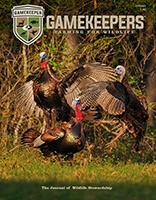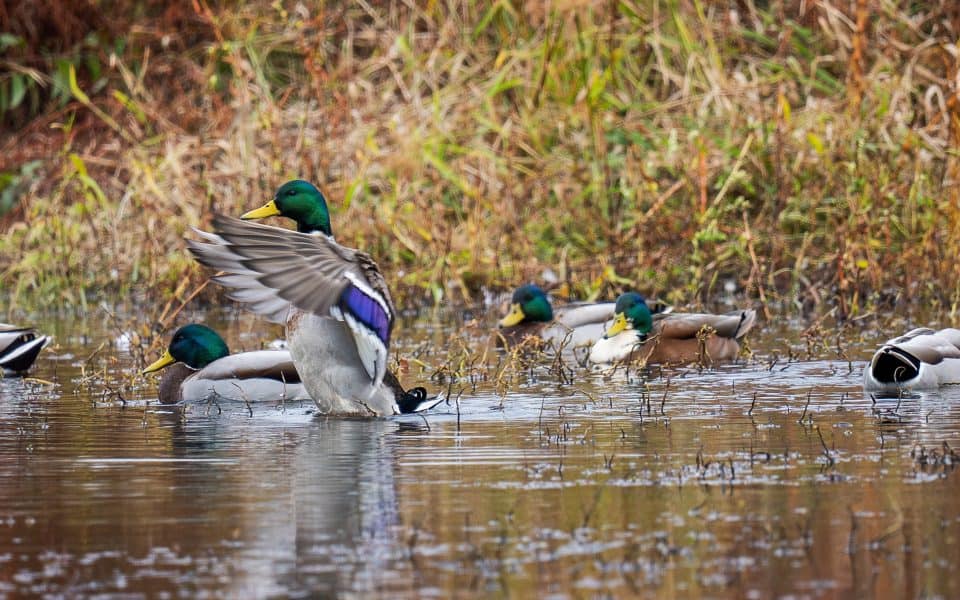Introduction
Waterfowl are a prized resource for hunters and wetland managers across North America. Beyond their ecological significance, ducks and geese contribute billions of dollars to local, state, and national economies through hunting and habitat management. Given their importance, landowners and conservationists continually invest in providing quality habitat, particularly in winter when food is essential for survival and migration preparation.
Over the years of assisting landowners with wetland management for waterfowl, I most often receive the following questions:
- What do ducks prefer to eat?
- Should I plant crops to attract ducks?
- Do ducks favor agricultural grains like corn and rice over natural wetland plants?
- What can I do if I can’t plant crops?
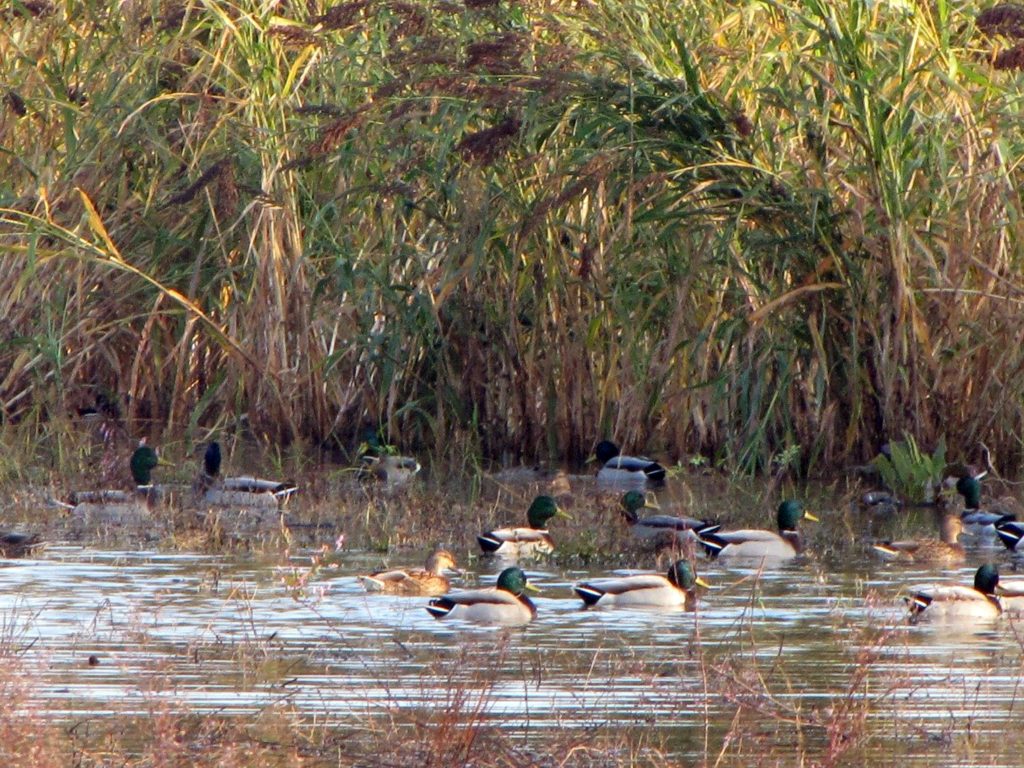
Shannon Chunn
A biologist’s favorite response is “it depends”—and in this case, it truly does. Many factors influence waterfowl habitat management on a specific property. Habitat recommendations should not be “cookie-cutter” solutions, but rather carefully tailored to each property within the broader landscape.
This article answers these questions and provides practical guidance on creating high-quality foraging habitat for wintering waterfowl, particularly dabbling ducks such as mallards, gadwall, pintails, and teal. Whether you’re looking to enhance hunting opportunities or improve wetland conservation, understanding what attracts and sustains ducks is key to successful management.
What Do Ducks Eat?
Understanding what wildlife eat, or their “food habits,” is one of the first steps in comprehending their basic ecology. Waterfowl scientists have formally studied food habits for over a century, with one of the earliest studies published in 1918. Since then, extensive research has provided a strong foundation for understanding what ducks eat during winter. However, studies continue to refine our knowledge of food selection and habitat preferences to inform habitat management strategies.
Ducks are opportunistic feeders with diverse diets that shift with the seasons. During winter, dabbling ducks primarily consume seeds, tubers, aquatic vegetation, and invertebrates. The energy demands of colder temperatures and upcoming migration require foods high in carbohydrates and fats, such as acorns, natural wetland seeds, and agricultural grains. However, much like humans, ducks need a balanced diet. While crops like corn provide excellent energy sources, they lack essential nutrients, making native wetland plants and aquatic invertebrates equally vital.
Ducks display selective feeding behaviors based on availability, energy requirements, and habitat conditions. The proportion of certain foods in their diets may change based on environmental factors or physiological needs. This variability highlights the importance of managing habitats that offer a broad range of food resources.
To Plant or Not to Plant?
Ducks rely on a variety of wetland types to meet their biological needs. Each plays a unique role in providing food and habitat:
- Moist-soil wetlands – Support native grasses, sedges, forbs, and aquatic invertebrates.
- Forested wetlands – Provide acorns, other seeds, aquatic invertebrates, and critical cover.
- Semi-permanent and permanent wetlands – Offer aquatic vegetation and invertebrates.
- Agricultural wetlands – Supply waste grains from harvested crops or standing crops that supplement natural foods.
Dabbling ducks, especially mallards, benefit from a diverse landscape that includes all these wetland types to some extent. This highlights the importance of considering your property as part of a broader regional habitat network rather than in isolation.
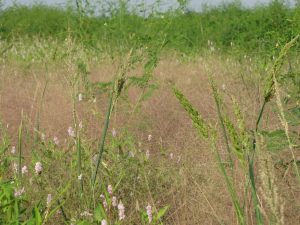
James Callicutt
The Role of Natural Wetlands vs. Planted Crops
A common misconception is that planting food plots is the only way to attract ducks and the first tool that managers reach for. While planted crops can be beneficial, well-managed natural wetlands can often provide equal or greater habitat value. Many native wetland plants produce high-energy seeds and tubers while also fostering aquatic invertebrates, an essential protein source for ducks.
A study in the Mississippi Delta found that mallards prefer landscapes composed of:
- 50% flooded cropland
- 20% forested wetlands
- 10% permanent open water
- 20% moist-soil wetlands
Given that a mallard’s average home range spans 12 to 16 miles, assessing the wetland types within that radius can help identify missing habitat components and determine the most beneficial additions to your property.
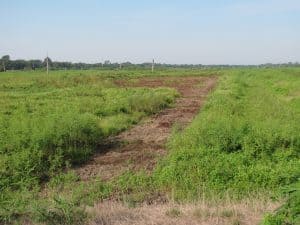
James Callicutt
Key Considerations Before Planting
Before deciding to plant food plots, consider the following:
1) The surrounding landscape – What wetland types already exist in your area?
2) Missing habitat components – Which wetland types are lacking? Would additional moist-soil wetlands or agricultural crops enhance your property’s value to ducks?
3) Management capacity – Do you have the necessary resources (e.g., land, equipment, water control structures) to effectively manage moist-soil wetlands or planted crops?
The Next Steps
Once you have identified the type of foraging habitat that will enhance your property’s attractiveness to ducks, the next step is understanding how to establish and manage these areas effectively. The following sections outline key activities and best practices to help you achieve this.
Managing Natural Vegetation
Moist-soil management mimics the natural wet-dry-wet cycle of wetlands—think of it as creating a beaver wetland using levees and a water control structure. The gradual drying of these wetlands fosters moist soil conditions, promoting the growth of native grasses, sedges, and forbs that provide a diverse and nutrient-rich food source for ducks. These wetlands also support aquatic invertebrates, which are essential sources of protein for feather molting and egg production. Effective moist-soil management involves:
- Annual Drawdowns – Lowering water levels in spring promotes beneficial plant growth.
- Soil Disturbance – Disking every two to three years encourages annual grasses and sedges.
- Vegetation Monitoring – Regularly checking for and controlling invasive or non-palatable plants ensures high-quality food availability.
- Vegetation Manipulation – Mowing or disking in the fall creates open water areas to create patches of open water, improving food accessibility for ducks. Disking on a rotational basis also prepares the soil for better plant production the following spring.
Planted Food Plots: When and What to Grow
When properly integrated into a wetland management plan, planted food plots can supplement natural vegetation. Commonly planted crops for waterfowl include:
- Millets (Japanese, Chiwapa, brown top, and proso) – Quick-growing and ideal for newly cleared areas, beaver wetlands, and mudflats.
- Rice – High in energy and capable of producing seed-rich wetlands.
- Corn and Milo – Excellent energy sources, though susceptible to consumption by other wildlife before ducks arrive. Best suited for the right soils and when a high energy food source component is lacking in the landscape.
- Sorghum-Sudangrass – Primarily used as cover, but ducks will forage on its seeds when available. It provides excellent screening and hunting cover.
Best Practices for Planting Food Plots
- Select crops based on soil and water conditions (e.g., Japanese millet for wetter soils, browntop millet for drier areas).
- Time plantings according to maturation periods to ensure full development by fall.
- Avoid baiting violations—manipulating standing crops (e.g., mowing, disking) in the same year as planting is illegal for hunting purposes. However, natural moist-soil vegetation can be legally manipulated.
Flooding Strategies for Waterfowl Habitat
Flooding is a critical component of waterfowl habitat management. The timing and depth of flooding should align with duck migration patterns and feeding preferences.
- Early-season flooding (August–October) benefits teal and early migrants.
- Incremental flooding (October–January) extends food availability over the hunting season. Avoid flooding 100% of managed areas by opening day; instead, stagger flooding to provide fresh habitat throughout the season.
- Water depth matters: Most dabbling ducks prefer 6–12 inches of water. Shallower areas (2–4 inches) attract teal and pintails, while deeper zones can support diving ducks.

Mossy Oak
Conclusion
Managing wetlands for waterfowl involves more than just planting crops—it requires a holistic approach that includes maintaining natural vegetation, managing water levels, and providing a diversity of foraging opportunities. Whether through natural moist-soil wetlands or strategically placed food plots, the goal should be to create a balanced landscape that meets the dietary and biological needs of ducks throughout the winter.
By understanding what ducks eat and how they use different wetland habitats, landowners can make informed management decisions that not only attract more waterfowl but also contribute to their overall conservation. So before reaching for the seed bag, take a step back and consider the bigger picture—your ducks, and your hunting success, will thank you for it.
Join our weekly newsletter or subscribe to Gamekeepers Magazine.
Your source for information, equipment, know-how, deals and discounts to help you get the most from every hard-earned moment in the field.
